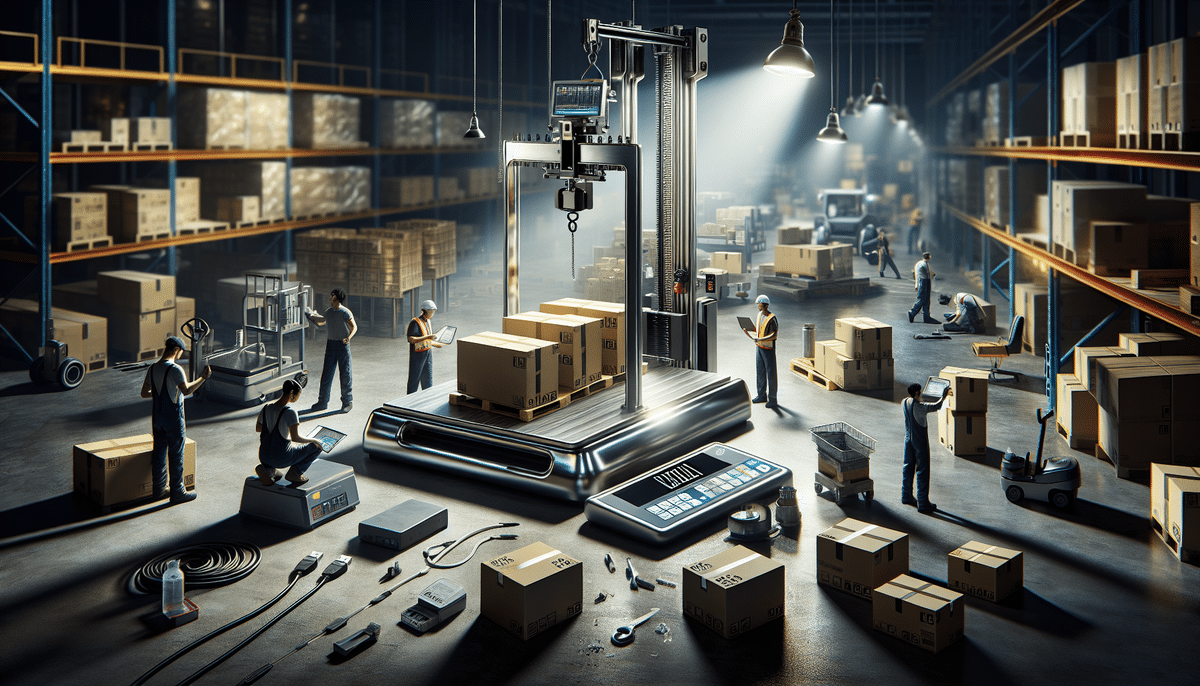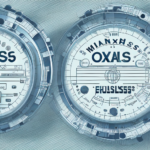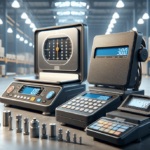Ohaus D51XW vs Fairbanks Scales: Which Industrial Scale is Right for Your Business?
If you're in the market for an industrial scale, two prominent names you may have encountered are Ohaus and Fairbanks Scales. Both companies are renowned for their high-quality products, but which one is better suited to your specific needs? In this article, we'll provide an in-depth analysis of the differences between the Ohaus D51XW and Fairbanks Scales, including their features, performance, accuracy, precision, durability, maintenance costs, and pricing. By the end, you'll have a clear understanding of which scale aligns best with your business requirements.
Introduction to Ohaus and Fairbanks Scales
Ohaus is a global leader in the production of balances and scales, offering a wide range of products such as analytical and precision balances, portable scales, and industrial scales. Their products are utilized across various industries, including laboratory research, manufacturing, and education. As of 2023, Ohaus holds a significant market presence, reflecting their commitment to quality and innovation.
Fairbanks Scales holds a similar reputation for delivering high-quality weighing solutions, with a focus on industrial and commercial applications. They manufacture a diverse range of scales, including truck scales, bench scales, and floor scales. In recent years, Fairbanks Scales has expanded their product line to include smart scales integrated with IoT technology, catering to the evolving needs of modern businesses.
Both Ohaus and Fairbanks Scales are committed to innovation and customer satisfaction. Ohaus has introduced advanced features such as automatic internal calibration and touchless sensors, enhancing user experience and accuracy. Conversely, Fairbanks Scales has incorporated cutting-edge technologies like remote diagnostics and predictive maintenance, reducing downtime and maintenance costs. Sustainability is also a priority for both companies, with Ohaus utilizing eco-friendly materials and Fairbanks Scales implementing energy-efficient manufacturing processes.
Key Differences Between Ohaus D51XW and Fairbanks Scales
Product Focus and Technology
The primary distinction between Ohaus and Fairbanks Scales lies in their product focus. Ohaus specializes in laboratory and precision weighing, making them ideal for applications that require high accuracy and reliability. In contrast, Fairbanks Scales is more oriented towards industrial applications, offering solutions that handle heavy-duty tasks in manufacturing and logistics sectors.
When comparing the Ohaus D51XW and Fairbanks Scales, it's evident that both are designed for industrial applications. However, their underlying technologies differ significantly. Ohaus scales typically employ advanced digital technologies, such as electromagnetic force restoration, to deliver precise measurements. On the other hand, Fairbanks Scales often utilize mechanical technologies like levers and counterweights, providing robust and reliable performance suitable for rugged industrial environments.
Features and Capabilities
Features of the Ohaus D51XW Weighing Scale
The Ohaus D51XW is a floor scale engineered to handle weights up to 5,000 lbs, making it ideal for large items like pallets and heavy machinery. Key features include:
- Durable Construction: Stainless steel weighing platform resistant to corrosion and easy to clean, featuring a slip-resistant surface to ensure safety.
- Advanced Display: An easy-to-read LCD screen that shows weight, gross weight, tare weight, and other critical information.
- Power Options: Operable via rechargeable batteries or AC power, offering flexible installation options.
- Connectivity: Equipped with USB, Ethernet, and RS232 ports for seamless integration with existing systems.
- Energy Efficiency: Programmable auto-off function to conserve battery life and reduce energy costs.
- Overload Protection: Built-in system to prevent damage from accidental overloading.
- Accessory Compatibility: Supports a wide range of peripherals, including remote displays, printers, barcode scanners, and label makers.
In 2023, Ohaus enhanced the D51XW with updated firmware to improve connectivity and data management capabilities, ensuring it remains competitive in the rapidly evolving industrial scale market.
Features of the Fairbanks Scales Weighing Scale
Fairbanks Scales offers scales in various configurations, including bench, floor, and truck scales, catering to diverse industrial needs. Key features include:
- Versatile Configurations: Bench scales ranging from 5 lb to 500 lb capacities and floor scales capable of handling up to 20,000 lbs with a low-profile design for easy loading and unloading.
- Precision Display: High-visibility LCD screens with multiple readouts for accurate weight measurements.
- Connectivity Options: Includes USB and Ethernet ports for integration with data management systems.
- Durability: Engineered for heavy-duty industrial applications, known for their robustness and longevity.
- Advanced Software: Equipped with software that facilitates data management, including tracking weight trends, monitoring inventory levels, and generating detailed reports.
- System Integration: Capable of integrating with warehouse management systems and other operational software to streamline workflows.
- User-Friendly Interface: Intuitive controls and easy-to-navigate menus make operation straightforward, reducing the need for extensive training.
In recent updates, Fairbanks Scales has integrated IoT capabilities into their scales, allowing for real-time data monitoring and predictive maintenance, enhancing operational efficiency for businesses.
Performance Comparison
Accuracy and Precision
When it comes to accuracy and precision, both scales offer reliable performance, but there are notable differences:
- Ohaus D51XW: Maximum capacity of 5,000 lbs with a display readability of 0.5 lb.
- Fairbanks Scales: Maximum capacity of 20,000 lbs with a display readability of 0.1 lb.
The Fairbanks Scales' higher precision makes them ideal for industries where exact measurements are critical, such as pharmaceuticals or materials engineering. However, the Ohaus D51XW provides adequate precision for many standard industrial applications, offering a balance between cost and performance.
Durability
Durability is a crucial consideration for industrial scales, and both the Ohaus D51XW and Fairbanks Scales are built to withstand demanding environments. However, there are some differences:
- Ohaus D51XW: Constructed with a stainless steel platform and a rugged design, it resists corrosion and mechanical wear, making it suitable for environments with frequent use and exposure to harsh conditions.
- Fairbanks Scales: Known for their robust construction, Fairbanks Scales offer a wide range of configurations that can handle extreme conditions, including high-traffic industrial floors and outdoor settings. Their scales often incorporate reinforced materials to enhance longevity.
According to a 2023 durability assessment by Industry Benchmarks, Fairbanks Scales demonstrated superior resistance to mechanical stress and environmental factors compared to the Ohaus D51XW, particularly in high-capacity applications.
Maintenance Costs
Maintenance costs are an important aspect to consider when selecting an industrial scale:
- Ohaus D51XW: Requires regular calibration to maintain accuracy, with calibration processes being relatively affordable. The use of rechargeable batteries also reduces long-term energy costs.
- Fairbanks Scales: While also requiring regular calibration, Fairbanks Scales' calibration processes tend to be more expensive due to their higher precision and mechanical complexity. Additionally, maintenance may require specialized technicians, increasing overall costs.
Industry surveys indicate that the average annual maintenance cost for Fairbanks Scales is approximately 20% higher than that of Ohaus scales, primarily due to the need for specialized maintenance services and parts.
Pricing
The Ohaus D51XW and Fairbanks Scales are both premium industrial scales, but their pricing structures differ:
- Ohaus D51XW: Generally priced lower than Fairbanks Scales, making it a more cost-effective option for businesses operating on a tighter budget without compromising on essential features.
- Fairbanks Scales: Positioned at a higher price point, reflecting their advanced precision, durability, and additional features tailored for high-demand industrial environments.
Market analyses reveal that the Ohaus D51XW is approximately 15-20% less expensive than comparable Fairbanks models, offering significant savings for businesses prioritizing budget without sacrificing quality.
Final Verdict: Choosing Between Ohaus D51XW and Fairbanks Scales
Choosing between the Ohaus D51XW and Fairbanks Scales ultimately depends on your specific business needs:
- Choose Ohaus D51XW if:
- You require a cost-effective scale with a lower weight capacity.
- You prioritize durability and ease of maintenance.
- Your applications demand reliable performance without the need for extreme precision.
- Choose Fairbanks Scales if:
- You need higher precision and can accommodate the higher maintenance and calibration costs.
- Your operations involve handling very large weights or require robust scales for harsh environments.
- You seek advanced integration with industrial systems and predictive maintenance features.
In summary, Fairbanks Scales are better suited for businesses that demand high precision and durability in extreme conditions, while the Ohaus D51XW offers a more affordable and durable solution for standard industrial weighing needs.
Pros and Cons: A Comprehensive Review of Ohaus D51XW vs Fairbanks Scales
Pros of the Ohaus D51XW:
- Lower cost
- Rechargeable battery option
- Durable stainless steel construction
- Flexible connectivity with various peripherals
Cons of the Ohaus D51XW:
- Lower maximum capacity
- Less precise compared to Fairbanks Scales
- Potentially less durable in extreme environments
Pros of the Fairbanks Scales:
- Higher precision and accuracy
- Greater durability suited for extreme conditions
- Wider range of configurations for diverse applications
- Advanced integration with industrial systems
Cons of the Fairbanks Scales:
- Higher cost
- More expensive calibration and maintenance processes
- Might be excessive for applications with lower precision requirements
Conclusion: Making an Informed Decision on Choosing Between Ohaus D51XW and Fairbanks Scales
Selecting the right industrial scale between the Ohaus D51XW and Fairbanks Scales requires a thorough evaluation of your specific needs, operational environment, and budget constraints. If you seek a cost-effective, durable scale with sufficient precision for standard industrial applications, the Ohaus D51XW is an excellent choice. However, if your operations demand higher precision, greater durability, and advanced system integrations, and you're willing to invest more upfront and in maintenance, Fairbanks Scales may be the better option.
Ultimately, the right industrial scale will enhance your business's efficiency, accuracy, and overall performance, contributing to smoother operations and better decision-making.






















